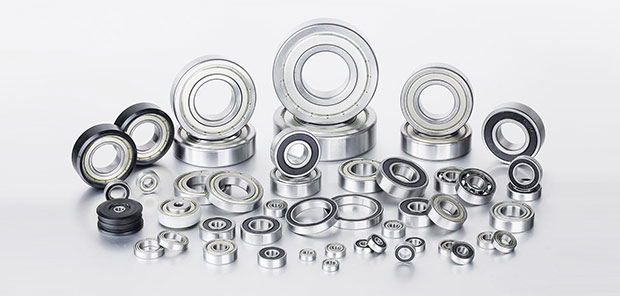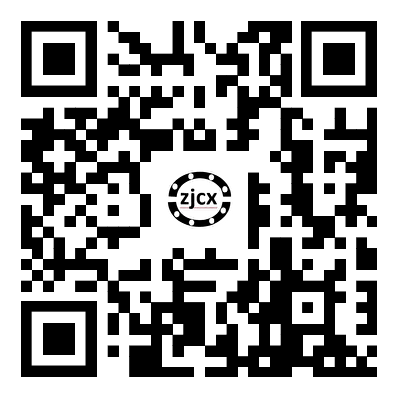1. Poor lubrication (accounting for about 35%)
Fault manifestations:
Scratches, discoloration (blue), and abnormal wear on the rolling element or raceway surface.
High temperature (>80℃) or increased noise.
Cause breakdown:
Insufficient lubrication: Grease is not replenished regularly or the oil film is broken.
Grease deterioration: high-temperature oxidation, impurities mixed in, or life expiration (such as lithium-based grease life of about 2000 hours).
Wrong grease type: high-viscosity grease is used for high-speed bearings (such as NLGI 3 grease, which causes excessive resistance).
Preventive measures:
Select lubricants according to working conditions (synthetic oil for high speed, extreme pressure grease for heavy load).
Regularly check the grease status (color, impurities), and use an automatic lubrication system.
2. Pollution and foreign matter intrusion (accounting for about 25%)
Fault manifestations:
Dot pits on the raceway surface (hard particle indentations), damaged seals.
Internal rust on the bearing (water or acid intrusion).
Pollution sources:
External environment: dust, metal chips (such as machine tool cutting environment).
Internal pollution: grease contains impurities or seal failure (such as aging of 2RS rubber seal).
Preventive measures:
Upgrade the seal level (contact seal or labyrinth seal).
Use stainless steel bearings (such as SS304) in polluted environments.
3. Improper installation (accounting for about 15%)
Fault manifestations:
Cracks in the inner and outer rings of the bearing, deformation of the cage.
Bearing rotation is stuck or the axial clearance is abnormal.
Typical errors:
Violent installation: Directly hit the outer ring of the bearing (the inner ring should be pressed with a hydraulic tool).
Excessive heating: The temperature exceeds 120°C during hot installation, causing material annealing.
Incorrect fit tolerance: The shaft diameter is too tight (above h5), causing the inner ring to expand.
Preventive measures:
Follow the installation specifications (such as SKF TMBP installation tool).
Control the hot-loading temperature (heat the bearing to 80-100℃ and avoid open flames).
4. Overload and impact (accounting for about 10%)
Fault manifestations:
Raceway peeling, rolling element fragmentation (ceramic ball bearings are more likely to occur).
Cage fracture (especially in frequent start-stop scenarios).
Overload type:
Static overload: equipment overweight or bearing selection is too small (such as the rated dynamic load of 6205 bearings is only 14kN).
Dynamic impact: gear meshing impact or excessive belt tension.
Solution:
Select high-load bearings (such as cylindrical roller bearings NU series).
Install a buffer device (such as an elastic coupling).
5. Fatigue failure (accounting for about 8%)
Fault manifestations:
Pitting (fish-scale peeling) on the raceway surface, fatigue crack expansion.
Life is much lower than the L10 theoretical value (such as the L10 life of deep groove ball bearings is usually 30,000 hours).
Acceleration factors:
High cycle stress: frequent changes in direction or overspeed operation (such as fan bearing speed exceeding the limit by 20%).
Material defects: steel inclusions or uneven heat treatment (such as insufficient quenching hardness of GCr15).
Methods to extend life:
Use vacuum degassed steel bearings (such as SKF Explorer series).
Reduce equivalent dynamic load (optimize transmission system vibration reduction).
6. Corrosion and electrolytic corrosion (accounting for about 5%)
Fault manifestations:
Track rust, current burn marks (such as variable frequency motor shaft current corrosion).
Grease emulsification (water causes grease hydrolysis).
Corrosion type:
Chemical corrosion: acid/alkaline medium erosion (such as food machinery cleaning agent).
Electrochemical corrosion: contact potential difference between different metals (such as steel shaft and aluminum shell).
Current corrosion: the inverter generates shaft voltage to break through the oil film (common in high-power motors).
Preventive measures:
Use fully sealed + stainless steel bearings (such as SS316L material).
Install grounding carbon brushes or insulating bearings (such as ceramic coated bearings).
7. Misalignment and vibration (accounting for about 2%)
Fault manifestations:
Bearing wear on one side, eccentric wear of inner and outer rings.
The vibration spectrum shows 2-fold frequency abnormality (typical misalignment feature).
Cause breakdown:
Shaft bending: processing error or long-term stress deformation.
Installation deviation: The coupling alignment error exceeds 0.05mm/m.
Foundation loosening: The anchor bolts are not tightened, causing resonance.
Solution:
Use self-aligning bearings (such as self-aligning ball bearings 1200 series).
Calibrate with laser centering instrument (tolerance controlled within 0.02mm/m).







